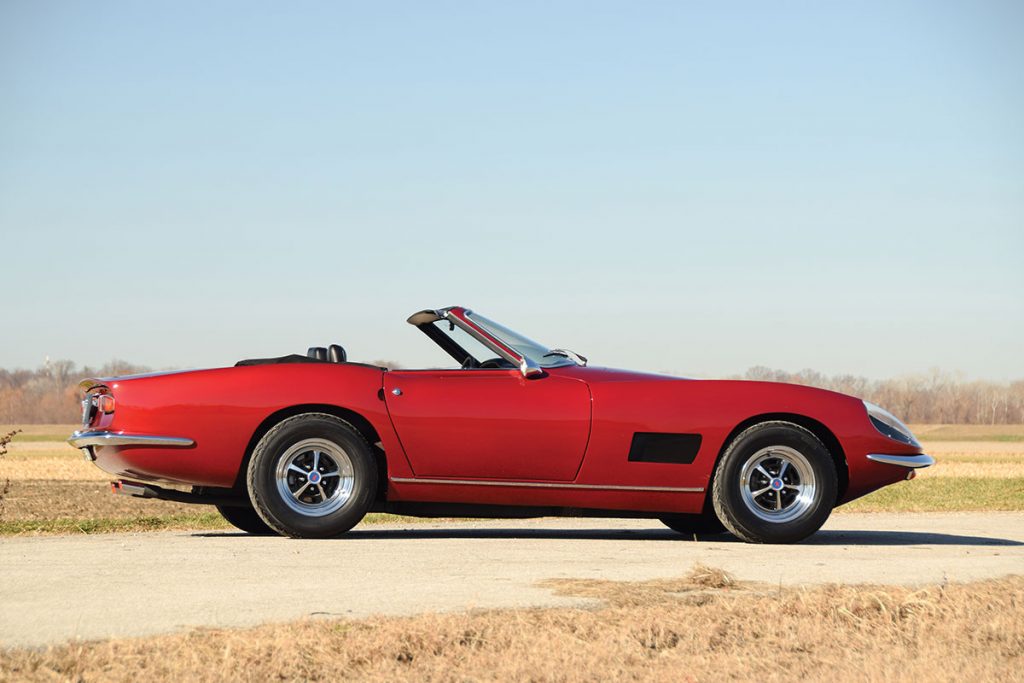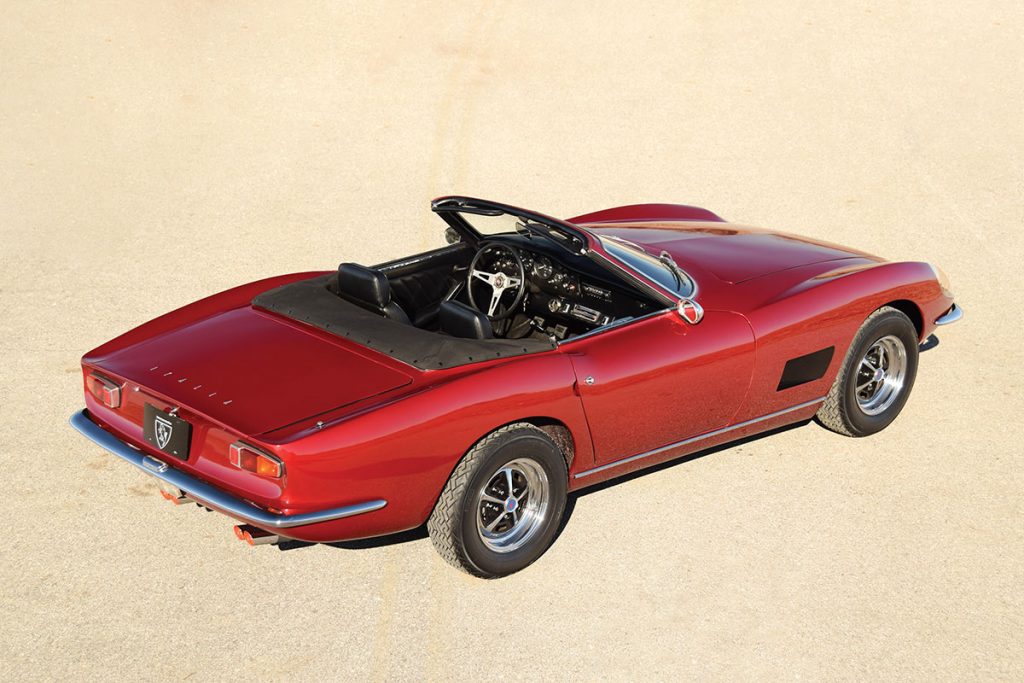Frank Reisner was born in Hungary in 1932, but his family fled to Canada in 1939. In the early 1950s Reisner graduated from the University of Michigan, married Czech-born Canadian Paula in the mid-1950s, and by 1957 Frank had built his own sports car. Two years later the couple took a holiday in Rome; they loved Italy so much that they decided to relocate there. Their grand plan involved setting up a tuning company called Costruzione Automobili Intermeccanica, more usually known simply as Intermeccanica.
The Reisners opened a factory in Turin, and they focused on making tuning kits for Simcas, Peugeots and Renaults. Along the way Frank also designed a Peugeot-powered Formula Junior single-seater, and a sporting coupé called the IMP, of which 21 were made.

At the 1961 Monaco Grand Prix, a chance conversation between Reisner and American engineer Milt Brown led to a partnership between the two, with Intermeccanica taking on the construction of a new grand tourer called the Apollo GT. Just 89 examples would be built before the project went belly up in 1965, but the Apollo’s demise would lead to a succession of opportunities for the Reisners.

In 1965 came the start of the Italia project, although from here on things get a bit convoluted, so try to keep up… Long Island TVR dealer Jack Griffiths commissioned Reisner to build a new grand tourer that would pick up where the Apollo GT left off. Designed by American Robert Cumberford (and refined by Franco Scaglione to improve usability), Jack Griffith commissioned 1000 cars to be built over a three-year period. The car made its debut at the 1966 New York Auto Show with a Ford V8 in the nose, but just 14 were made before the money ran out.
Cumberford was never paid by Griffith so a lawsuit followed, which resulted in the rights to the car being awarded to Cumberford, who promptly sold them to Frank Reisner. By this point it was 1966, when along came a new protagonist: motoring writer Steve Wilder, who then turned the Intermeccanica Griffith into the Chrysler V8-powered Omega, 33 of which were made before Wilder lost interest and walked away, leaving Reisner with the rights to sell the Omega coupé.

Reisner was keen to keep building the Omega, but Wilder had sold the rights to the name, to General Motors. As a result Reisner put the coupé back into production, but as the Torino, and now with a Ford V8 once again, this time displacing 289ci (4.7 litres). The Intermeccanica Torino made its debut at the 1967 New York Auto Show, where once again it caused a sensation, and despite a $6000 price tag there was no shortage of orders.
The Griffith and Omega had been available only as a coupé, but from the outset the Torino was offered as a convertible. Unfortunately, Ford took exception to Reisner marketing his coupé as the Torino, so after about 45 cars had been produced there was yet another name change, this time to Italia. By spring 1968 Intermeccanica had switched to a Ford 302ci (5.0-litre) V8, which was less powerful than the outgoing engine, but cleaner and capable of complying with Federal emissions regulations.
Intermeccanica production lasted until spring 1972, by which point around 400 examples had been made. In 1975 the Reisners moved back to Canada where they would start a new company, to build Porsche 356 replicas. Frank Reisner died in 2001, but Intermeccanica is still going, run by Frank’s son Henry who continues to produce 356 lookalikes, along with his own version of the Volkswagen Kubelwagen.
Read more
Six classic European sports cars with American V8 engines
The Intermeccanica Apollo is a different breed of hybrid
5 classy yet obscure mid-century roadsters












I owned a 1968 Torino Italia coupe with factory A/C in 1974. Purchased it for $1500/ Great Car and inexpensive to Repair. Sold it and purchased an Iso Grifo. Boy you Want to Talk about Hybrids!
That set me back $7500 Great GT touring car and I financed it. Sold it for 11k. Great Italian Sports Cars. The Real Hybrids Easy To fix
I grew up in Miami Florida. Sometime in the 1970s, I drove by a classic auto dealer and spotted a car on the used car lot that I had never seen before. That car was a bright yellow green Italia coupe. When the salesman opened the hood, I could see it had a Ford 289 V8 with three two barrel carburetors. He started the engine and I could hear the solid lifters of a HiPo 289. I don’t remember what they wanted for the car as I was too tall to sit in it. I only remember that car was awesume!
Random story but full of name dropping, so why not? Years ago I had a friend, who was the son of a Canadian folk icon’s bass player. A Dodge family by nature, the eldest son, either to be different or out of spite, had an Italia coupé that he was very very slowly restoring. I remember helping him install a full-body Painless wiring harness. To this day, it’s still my top bucket list car, Italian spaghetti wiring and all. Undampened gauges, achingly good looking with a stone-simple Ford V8. This world doesn’t know what they missed!